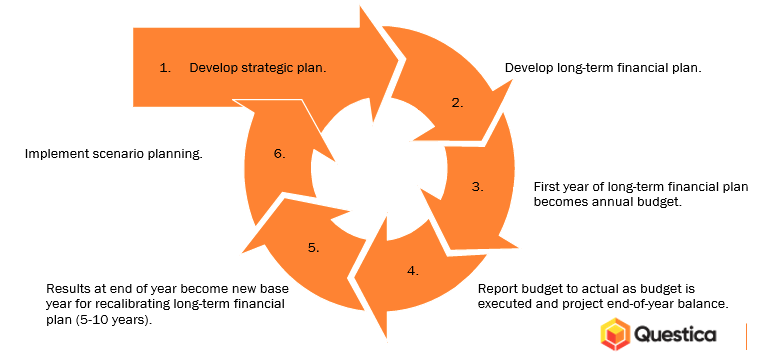For state and local governments, the pandemic has had far reaching economic effects. Policy analysts estimate that state and local revenue losses due to the COVID-19 pandemic will total about $300 billion through FY 2022. While this number is lower than even more dire numbers previously predicted, pandemic-related costs continue to rise in many localities, resulting in budget deficits that may force states to cut back on other services, lay off workers, or raise taxes.
However, the biggest deficit governments have right now (which can have even more severe consequences if not addressed in a timely manner) is public trust. While many governments saw a surge in public trust during the heat of the Coronavirus pandemic in 2020, a global survey by Deloitte shows that by January 2021, the trust in government had fallen again by 8 points globally, highlighting challenges in sustaining trust for longer periods of time.
In Questica’s latest webinar, attendees learned about the four ways governments are rethinking budgeting. You can watch the full on-demand recording for free here.
These four ways include:
- Greater emphasis on strategic planning
- Emphasis on forecast budgeting
- Necessity for continuous budgeting
- Scenario planning
So how can agencies adapt and utilize a more proactive strategy in their budgeting? The key is to adopt a continuous approach to financial management. Rather than solely budgeting on an annual basis, it’s especially important for governments now to also prepare 5-10 year plans and to focus on how short-term decisions will impact those long-term financial plans. This will not only help address current budget deficits but also assist in managing long-term goals and objectives. When presented with modern digital tools that promote transparency, this enhances public trust.
The Ins and Outs of Continuous Budgeting
At its core, continuous budgeting means all activities take place in a cycle of financial planning, executing, reporting on financial plans, adjusting those plans, and repeating the cycle. All the while, it’s important to check that the budget always aligns with strategic plans.
There are six phases to continuous budgeting:
- Develop your strategic plan.
- Develop your long-term financial plan.
- The first year of your long-term financial plan becomes the annual budget.
- As the budget is executed and you are reporting the budget to actual, project what the end-of year actual balance will be.
- The results at the end of the year become a new base year for recalibrating the long-term financial plan (5-10 years) which may be in or out of alignment with your strategic plan.
- Implement scenario planning.

Scenario Planning in Turbulent Times
With so much uncertainty, it’s practically impossible to determine the trajectory of economic recovery. Every day is giving us new information. That’s why when it comes to budgeting, developing scenarios will be critical to helping monitor the economy and surrounding financial conditions.
Scenario planning will be especially important in helping governments identify which plans to implement during times of crisis or during more stable periods. State and local governments need to start developing their own scenarios and develop action plans according to each scenario. If a crisis occurs, you’ll then be prepared to staff and properly respond to any scenario, even the worst case.
Having scenarios in place will be vital to short AND long-term economic recovery. These are important as first steps to take rather than making reactionary gut-level decisions that result in potentially unnecessary furloughs, layoffs and loss of livelihoods, stopping capital improvement plans, or closing City Hall–all of which can have devastating consequences for surrounding communities.
Want to learn more? Download our free playbook “4 Ways the Pandemic Has Force Governments to Rethink Budgeting.”





